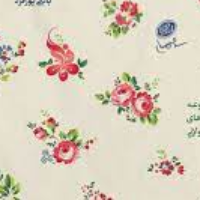Examining the Script Style and Visual Arrangements of the Grivar Inscription in the Davazdah Imam Mausoleum of Yazd
Problem Definition:
The Davazdah Imam Mausoleum of Yazd is one of the oldest buildings with inscriptions in Iran. The Grivar inscription of this building is Ornamental Kufic, which, unlike the simple Kufic, does not follow specific rules, and many innovations and modifications are made in it. Despite the high visual richness, the mentioned inscription has been deprived of formal analysis, while any but structured changes of the letters, the acceptance of complex forms, and additional elements make it worthy of further analysis. The current research seeks to find the answer to the following question: "what are the structural, visual, and formal characteristics of the Davazdah Imam Mausoleum of Yazd, and what rules did the designer establish in its design?"
This research aimed at identifying the structural and visual features of the Grivar inscription, such as writing style, proportions, and principles used in its composition.
The present research was carried out using a descriptive-analytical method, and the data was collected through library studies and field surveys.
The results showed that distancing from the legibility of words, exaggerating the shape of letters and basic proportions, is a method to achieve beauty and induce concepts beyond the literal meaning. However, the application of formal changes does not only mean losing the order and rules of script, but the designer has established certain principles and policies under the changes, to where maintaining the independent identity of the letters has been one of the primary design criteria.
-
Design Scheme and Proportional Analysis of the Kufic Inscription on the Stone Mihrab of Turan Posht Mosque and Pilgrimage Site, Yazd
Sahar Salehi, Mahnaz Shayestehfar *, Sayed Abotorab Ahmad Panah, Mohamad Khazaie
Paykareh, Spring 2025 -
Comparative Study of Human Motifs in Ilkhanid and Mamluk Metalwork (Case Study: Artifacts Preserved in the Metropolitan Museum)
Nilofar Seifi*, Mahdi Mohammadzadeh, Mahdi Makinejad
Golestan-e Honar, -
Study of the Halkari Technique in Book Decoration during the Safavid Period (Based on the 1558 Manuscript of the Chester Beatty Museum)
*, Roya Pourzolfgar, Milad Rafiei
Journal of Islamic Crafts, Autumn and Winter 2024 -
The application of five selected principles of Gestalt in the analysis of the grave inscription of the tomb of twelve imams in Yazd
*, Farnoosh Shamili
Journal of Negarineh Islamic Art, -
The Romantic Gaze: The Romantic Gaze: the phenomenon of the visual in the Majnun and Leyla Painting of Jami’s Haft Awrang, the Mashhad School in Comparison with Poetic Narratives of Jami and Attar
Monireh Panjtani *,
Journal of Mysticism Studies in Literature, -
Analyzing the Principles of Visual Perception in Decorative Kufic Script with the Emphasis on the Principles of Figure-Ground, Continuity and Common Fate; Case Study: The Inscription of Davazdah Imam Mausoleum of Yazd)
*, Shahriar Shekarpur.
Rahpooye Journal of Visual Arts,





